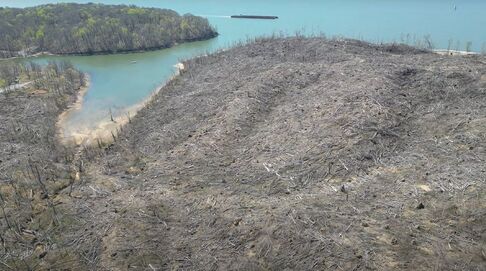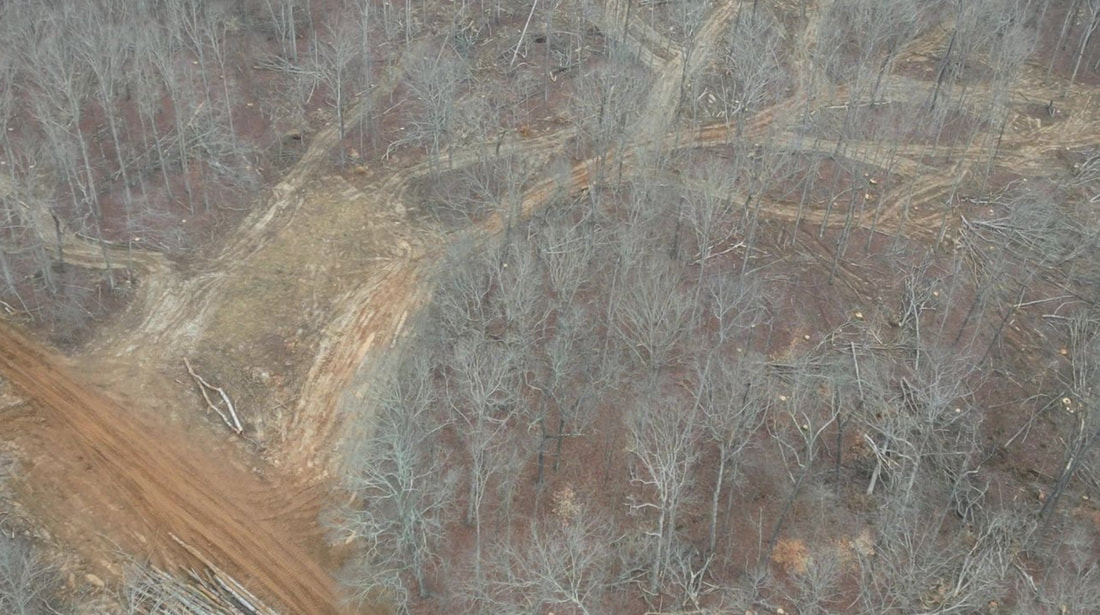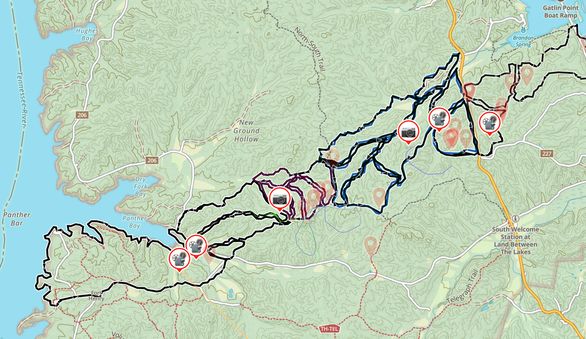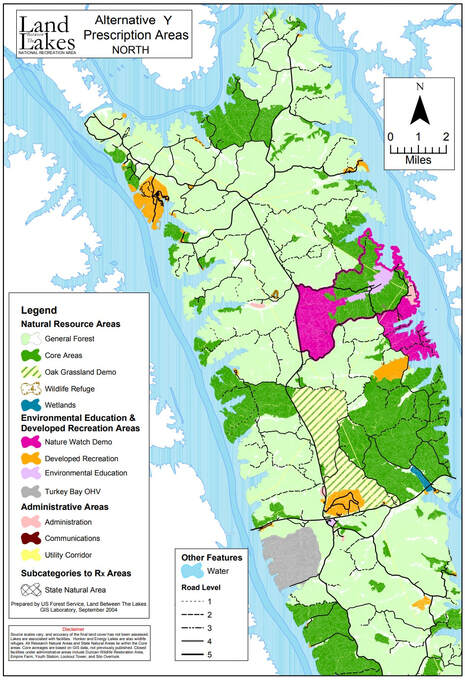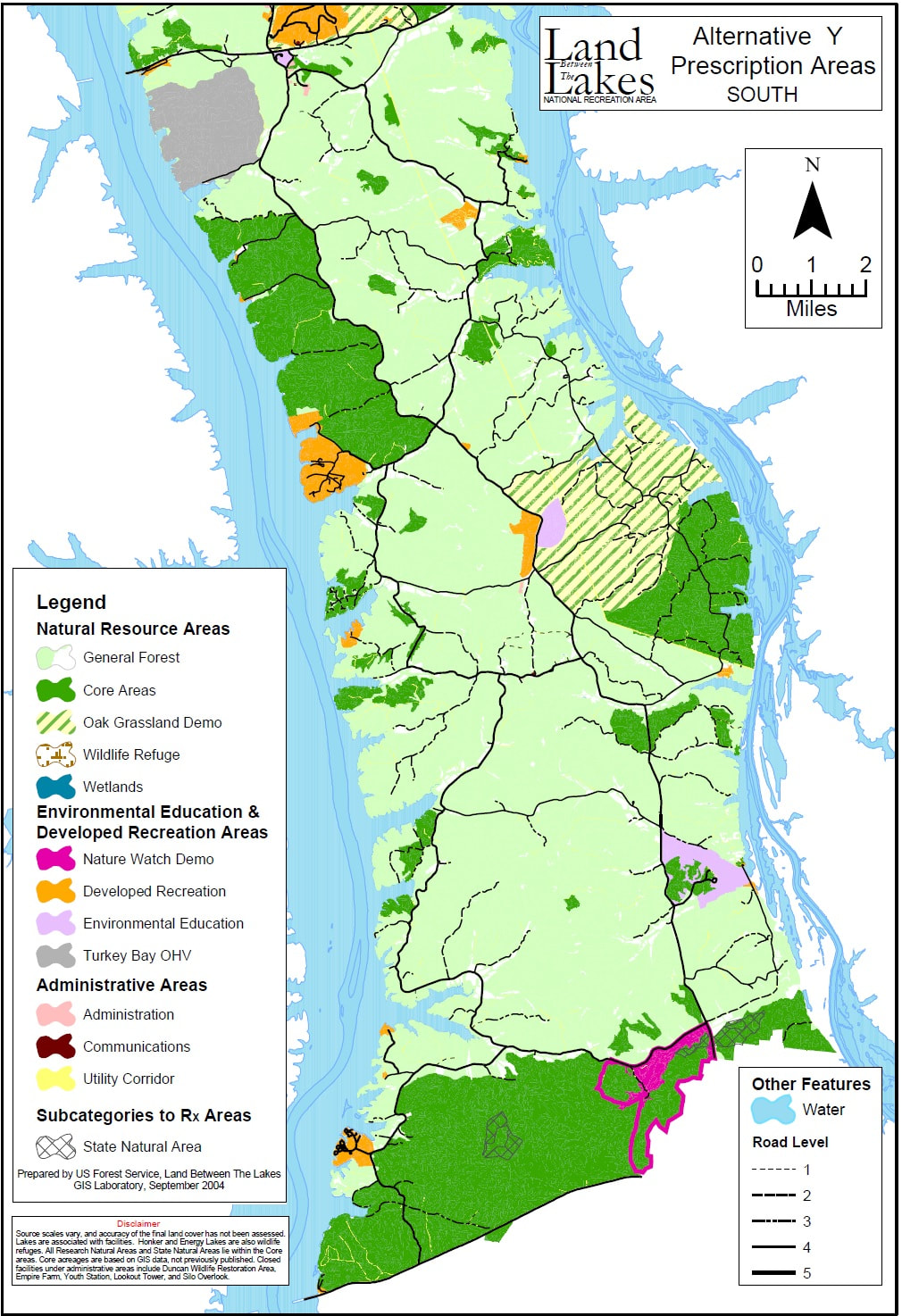Tornado Salvage and Emergency Declaration at Land Between the Lakes:
Problems Mount
Two tornadoes damaged a swath of trees in the LBL National Recreation Area in 2021- one on the Kentucky part of the forest, the other in Tennessee . Since then, the Forest Service has initiated salvage logging projects that are three times larger than the tornado zones.
The logging projects have targeted mature forests with trees documented to be as old as 140 years. The Forest Service violated federal law by categorically excluding these logging projects from environmental review.
On May 4, the Center for Biological Diversity and the Kentucky Resources Council filed a letter of concern to the agency, with a detailed supporting letter documenting conditions on the ground sent by the Tennessee Chapter of the Sierra Club, Tennessee Heartwood, Between the Rivers, Kentucky Heartwood, and Protect Our Woods.
“The Forest Service has misused emergency provisions to justify logging a National Recreation Area without rigorous environmental analysis,” said Jason Totoiu, senior attorney at the Center.
The logging projects also occur in forests and watersheds that shelter several endangered species, including the northern long-eared bat, tricolored bat, alligator snapping turtle, rabbitsfoot mussel, and pink mucket mussel. The agency acknowledges that the logging projects are likely to adversely affect endangered species.
In addition, the logging projects violate the agency’s own management plan for the Recreation Area. Logging is occurring in Core Areas, which are managed like roadless areas and intended to serve as an ecological baseline for the study of natural processes.
Logging beyond the tornado zones appears to be part of a larger Forest Service goal to convert thousands of acres of healthy, mature forest in the Recreation Area to grasslands, which has been widely opposed by the public, scientists, foresters, communities, and national political leaders. We have been given conflicting statements at different meetings from LBL staff about this supposed extending of the grassland concept, ranging from it being a set goal to a series of small research plots to it not happening at all.
‘The Land Between the Lakes National Recreation Area has been neglected for years,” said Totoiu. “It’s time to take a hard look at the Forest Service’s current actions and future plans for this beloved and biologically diverse forest.”
It is time for the agency to halt this project and reinitiate analysis before further damage to the forest happens. "It's also high time for the LBL to get up to agency standards," says Between the Rivers representative David Nickell. "Every step of this process has lacked transparency or meaningful communication with the public. "
The Center has found that the LBL requested from that Forest Service and received an authorization for additional "treatments" in 86,000 acres of the forest outside the salvage area. In a recent meeting with Supervisor Whalen and other staff, we were assured that they do not have to act on this authorization. Questions remain why it was asked for in the first place and the extent of how long they can have this as an option. As of early November 2023- a year and a half after this declaration was made without being disclosed to the public- locals and conservation groups have only gotten the agency to provide a one page document proclaiming the authorization and a rough map of the declaration area- with still no disclosure of who requested it, what is allowed under this declaration, and how it will be implemented. The Land Between the Lakes Federal Advisory board has still not been informed of this declaration, a violation of FACA (Federal Advisory Committee Act).
The revolving door of interim supervisors has kept the Forest Service from being accountable and transparent . This is underscored by Environmental Stewardship Staff Officer John Westbrook's continued unwillingness to adequately address concerns that have been raised throughout the process about keeping the public and the Advisory Board about the agency's actions, maintaining agency standards on public commnet opportunities, and logging outside of the immediate tornado path corridor.
The logging projects have targeted mature forests with trees documented to be as old as 140 years. The Forest Service violated federal law by categorically excluding these logging projects from environmental review.
On May 4, the Center for Biological Diversity and the Kentucky Resources Council filed a letter of concern to the agency, with a detailed supporting letter documenting conditions on the ground sent by the Tennessee Chapter of the Sierra Club, Tennessee Heartwood, Between the Rivers, Kentucky Heartwood, and Protect Our Woods.
“The Forest Service has misused emergency provisions to justify logging a National Recreation Area without rigorous environmental analysis,” said Jason Totoiu, senior attorney at the Center.
The logging projects also occur in forests and watersheds that shelter several endangered species, including the northern long-eared bat, tricolored bat, alligator snapping turtle, rabbitsfoot mussel, and pink mucket mussel. The agency acknowledges that the logging projects are likely to adversely affect endangered species.
In addition, the logging projects violate the agency’s own management plan for the Recreation Area. Logging is occurring in Core Areas, which are managed like roadless areas and intended to serve as an ecological baseline for the study of natural processes.
Logging beyond the tornado zones appears to be part of a larger Forest Service goal to convert thousands of acres of healthy, mature forest in the Recreation Area to grasslands, which has been widely opposed by the public, scientists, foresters, communities, and national political leaders. We have been given conflicting statements at different meetings from LBL staff about this supposed extending of the grassland concept, ranging from it being a set goal to a series of small research plots to it not happening at all.
‘The Land Between the Lakes National Recreation Area has been neglected for years,” said Totoiu. “It’s time to take a hard look at the Forest Service’s current actions and future plans for this beloved and biologically diverse forest.”
It is time for the agency to halt this project and reinitiate analysis before further damage to the forest happens. "It's also high time for the LBL to get up to agency standards," says Between the Rivers representative David Nickell. "Every step of this process has lacked transparency or meaningful communication with the public. "
The Center has found that the LBL requested from that Forest Service and received an authorization for additional "treatments" in 86,000 acres of the forest outside the salvage area. In a recent meeting with Supervisor Whalen and other staff, we were assured that they do not have to act on this authorization. Questions remain why it was asked for in the first place and the extent of how long they can have this as an option. As of early November 2023- a year and a half after this declaration was made without being disclosed to the public- locals and conservation groups have only gotten the agency to provide a one page document proclaiming the authorization and a rough map of the declaration area- with still no disclosure of who requested it, what is allowed under this declaration, and how it will be implemented. The Land Between the Lakes Federal Advisory board has still not been informed of this declaration, a violation of FACA (Federal Advisory Committee Act).
The revolving door of interim supervisors has kept the Forest Service from being accountable and transparent . This is underscored by Environmental Stewardship Staff Officer John Westbrook's continued unwillingness to adequately address concerns that have been raised throughout the process about keeping the public and the Advisory Board about the agency's actions, maintaining agency standards on public commnet opportunities, and logging outside of the immediate tornado path corridor.
Speak Up for the LBL
Citizens can let their voices be heard to the new LBL Supervisor Rhea Whalen. Let the agency know that it needs to act in a responsible manner and not use these tornado events to run over basic standards. Some things that the agency needs to do below:
While some areas, like Hillman Ferry, were heavily damaged, other places like parts of the JB Sale were more lightly affected, and the agency is going out of the immediate storm path and running skid road to take standing trees, sometimes in places where the forest has had little damage.
What the agency must do
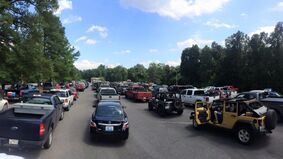
- The Core Areas are special places designated by the agency's Land Resource Management Plan LRMP) that are unroaded places where natural processes take place and no commercial logging happens. There are a few Core areas left in the north tornado path that have not been logged, such as at Clay Bay. They should be left alone. Maps and discussion of the Core Areas here.
- The LRMP calls for snags and denning trees to be retained in a salvage sale unless there is an insect infestation. No such case has happened, but the district is going against the plan and logging them anyway. This must stop.
- No more high grading of large standing trees.
- No more logging out of the direct tornado path.
- No more logging in low lying terrain subject to rutting and soil compaction.
- A defined burn plan if controlled burns are to happen, which are unneeded in many areas.
- The forest should be allowed to regenerate to the mixed hardwood it is. There should be no plans to convert these areas to a "savanna", "prairie", or "oak grassland". The agency has been trying to do this on thousands of acres already with no significant success. These practices caused tremendous protests in 2015. "tour of the 8600" protest - 2015
- There are a few sites on the forest that would make sense, but the agency instead keeps logging and burning sites that only turn into scrub.
- Bring agency standards to the LBL. The LBL flew this sale under the radar, with an announced 10 day comment period that nobody learned about, with a 2 page description and no real analysis for a 6000 acre project. This is unacceptable.
- Rescind the Emergency Declaration. There is no "emergency" any more. Any dangerous sites caused by the tornado have long been dealt with.
- Everything about the Emergency Declaration needs to be disclosed an put on the agency's website.
- TIme to living up to the standards of the Forest Service's NEPA obligations to public transparency and comment.
- The agency must become more transparent with their Federal Advisory Board.
Contact the LBL. We hope that new Supervisor Jim McCoy will bring needed changes for this forest.
Jim McCoy Area Supervisor, Land Between the Lakes National Recreation Area
100 Van Morgan Dr Golden Pond, KY 42211 [email protected]
Some discussions of the Project.
|
|
|
|
|
|
|
|
|
Links to the formal complaint, the supporting letter, and correspondance with the agency.
|
| ||||||||||||
| emergency_authorization_complaint.pdf | |
| File Size: | 722 kb |
| File Type: | |
| Discussion of Agency Transparency Issues: discussion_of_lbl_salvage_march_16.docx | |
| File Size: | 4892 kb |
| File Type: | docx |
What are the Core Areas?
The Core Areas are portions of the LBL that are managed like National Forest Roadless areas- places with no roads (other than trails) and are managed to serve as wild, unlogged parts of the forest that undergo natural processes. They are designated in the Forest Plan and act as "ecological controls" for research. Unfortunately, the agency does not promote these places, and few know about them. They are part of what makes the LBL special.
